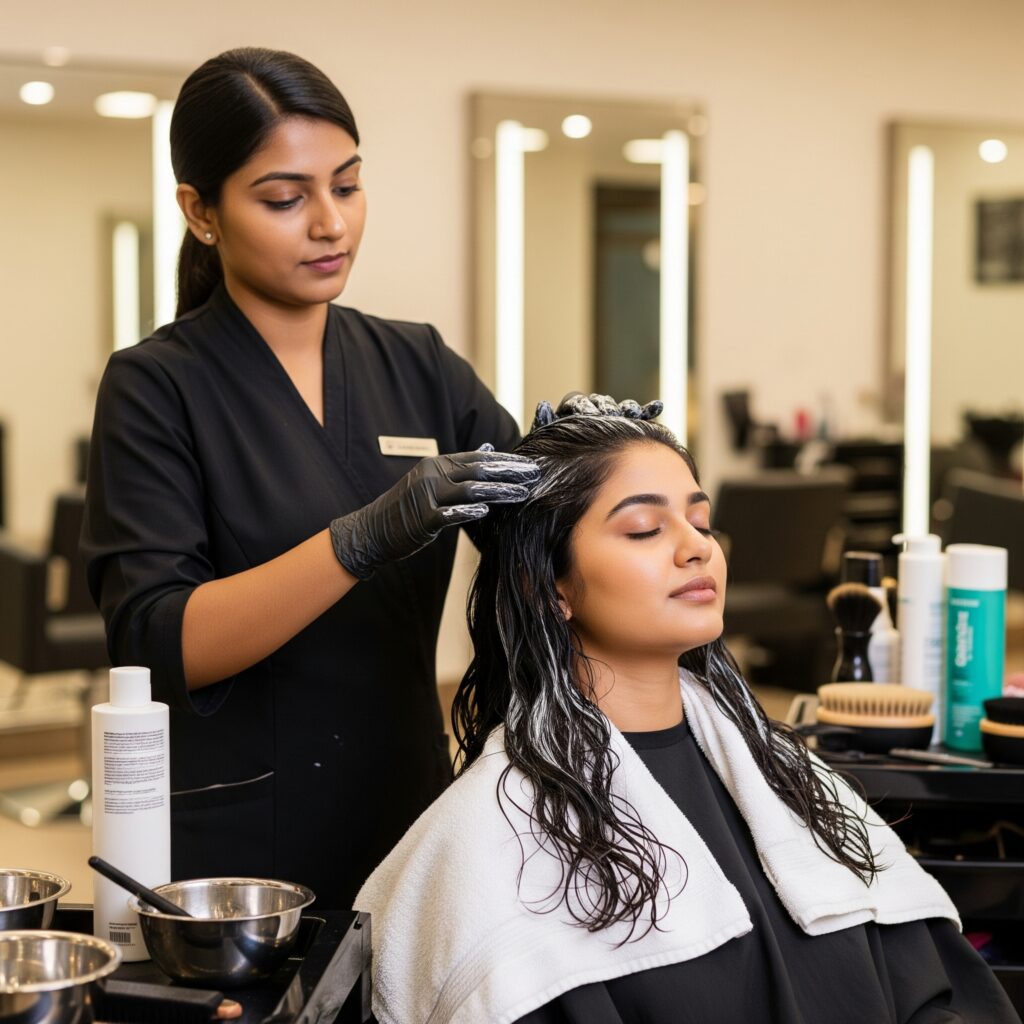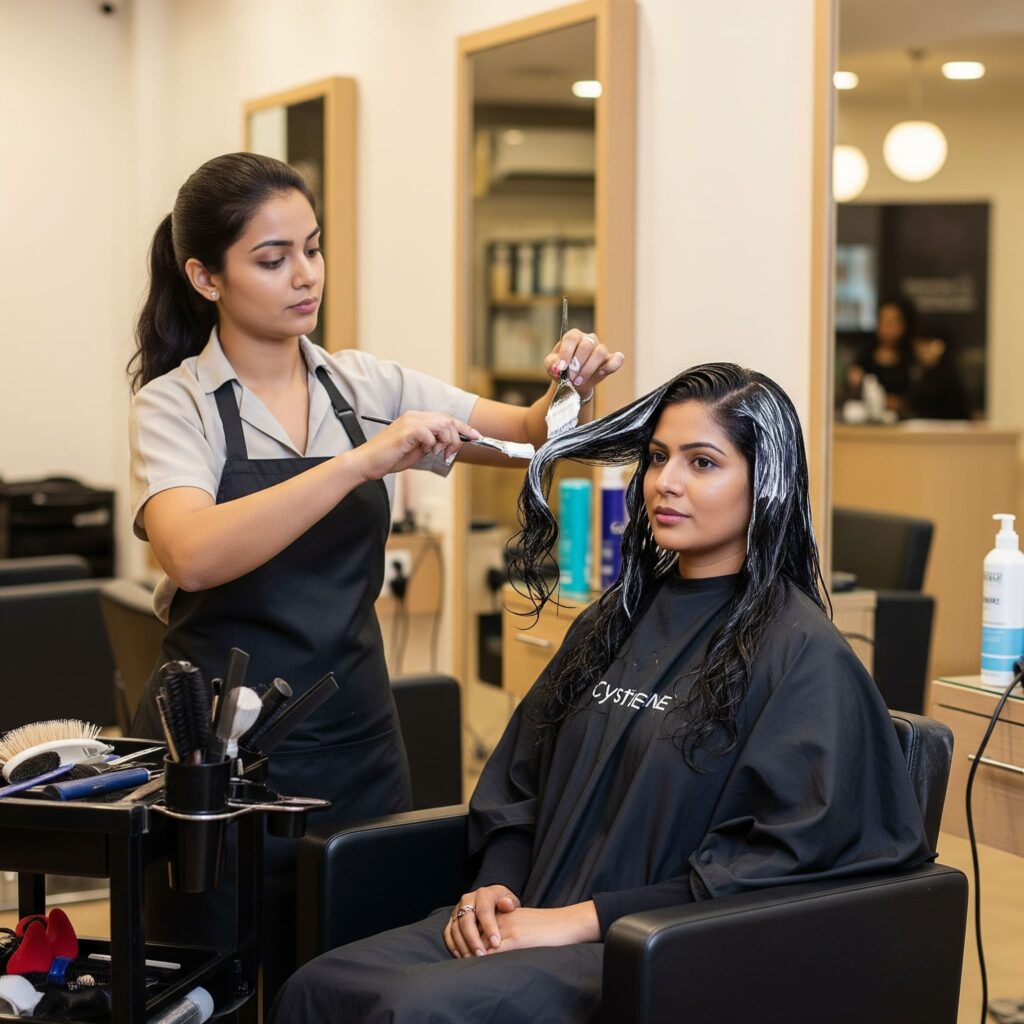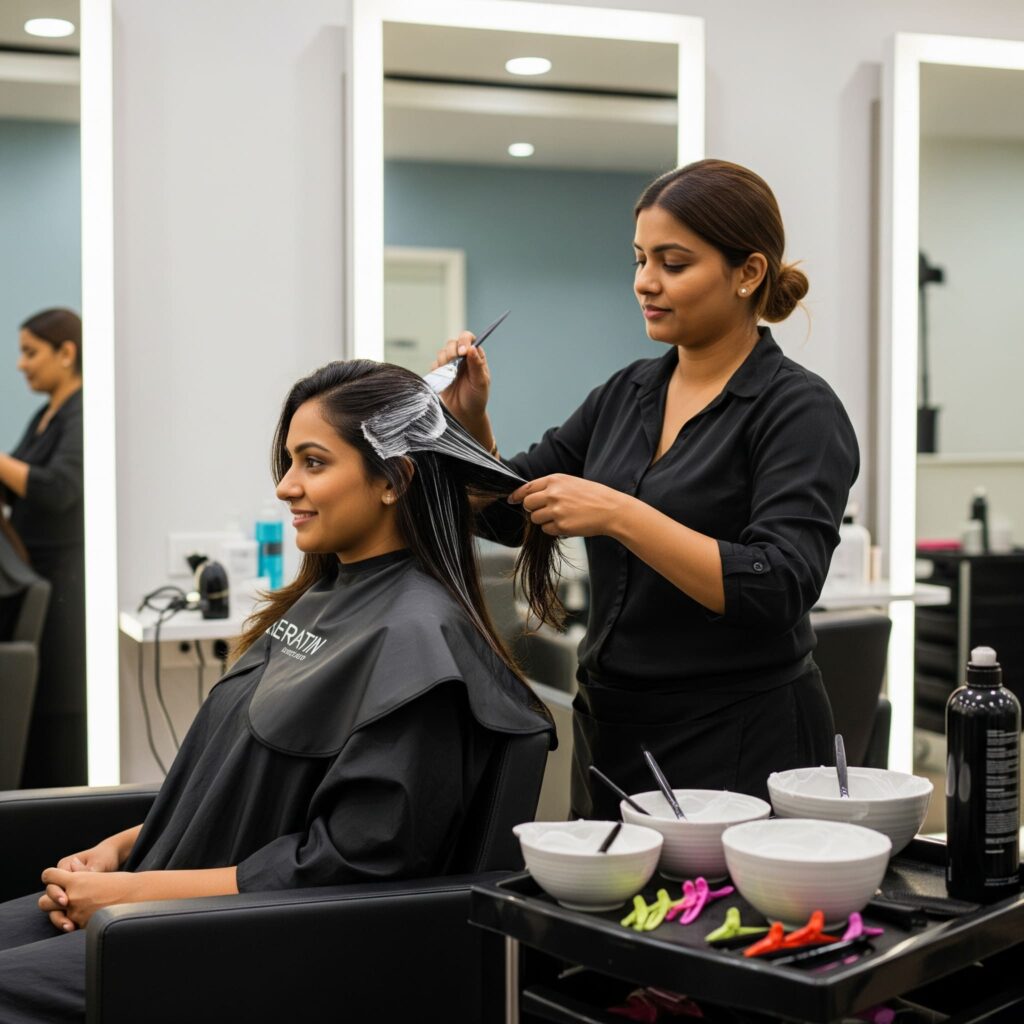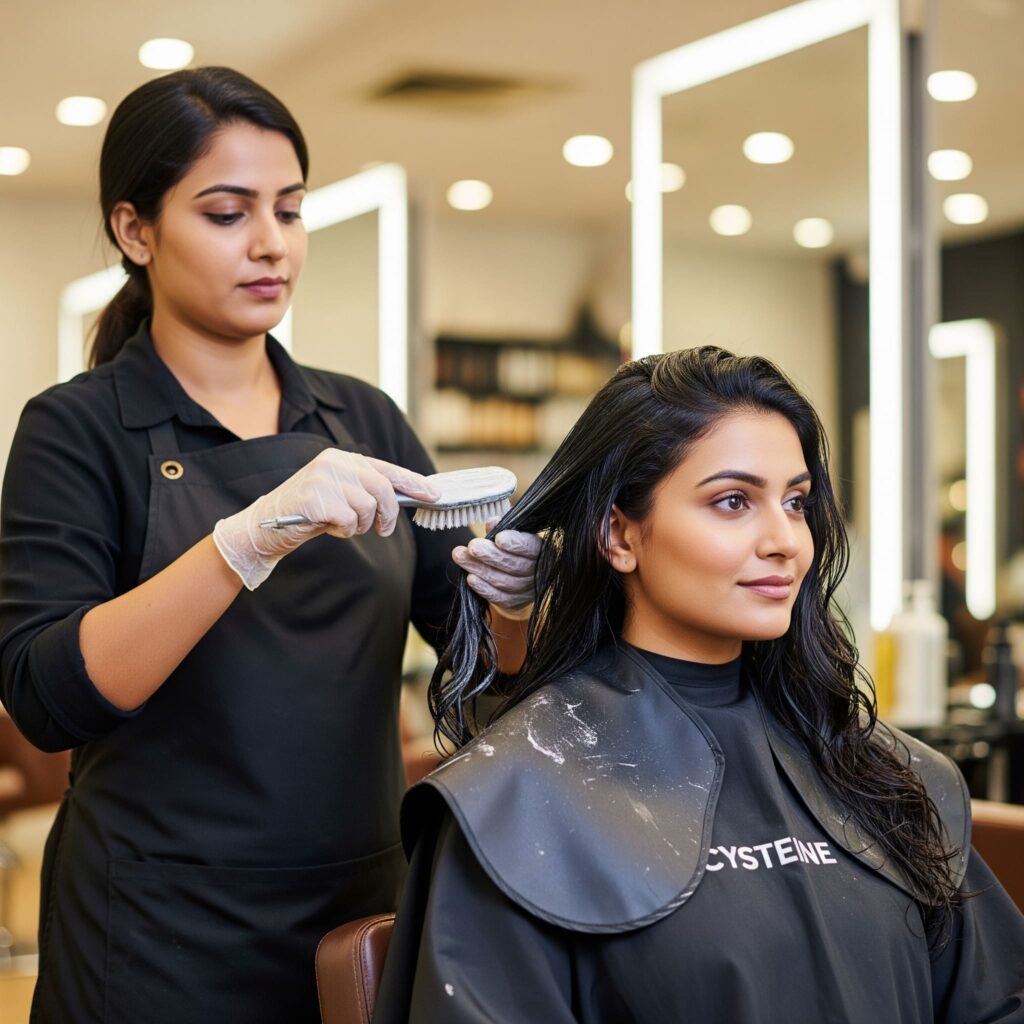Hair treatments are a popular way to tame frizz, enhance shine, and improve manageability. Among the many options, two treatments stand out for their effectiveness: cysteine hair treatment and keratin hair treatment. Understanding the differences in the cysteine hair treatment vs keratin hair treatment debate can help you choose the best option for your hair type and goals. Whether you’re dealing with curly hair, frizzy hair, or just want sleek, shiny locks, exploring cysteine hair treatment vs keratin hair treatment helps clarify which treatment suits your needs better.
Have you ever wondered about the advantages of keratin treatment for hair and the potential side effects? This article unpacks everything you need to know-from procedures and benefits to limitations and maintenance-to help you make an informed decision tailored to your hair. By weighing the pros and cons of cysteine hair treatment vs keratin hair treatment, you’ll be better equipped to select the perfect solution for smooth, healthy hair.
Table of Contents
What is Cysteine Hair Treatment?
Cysteine hair treatment is a gentle smoothing and nourishing procedure that uses the amino acid cysteine, naturally found in hair. When comparing cysteine hair treatment vs keratin hair treatment, cysteine stands out for being free of harsh chemicals like formaldehyde, making it safer for sensitive and damaged hair. This treatment helps reduce frizz, enhance shine, and slightly straighten hair, preserving natural volume and texture.
In the cysteine hair treatment vs keratin hair treatment debate, cysteine offers a softer, more natural finish compared to the pin-straight result of keratin. Ideal for those wanting manageable hair without heavy straightening, cysteine nourishes while smoothing. Overall, the choice between cysteine hair treatment vs keratin hair treatment depends on the desired look and hair health preferences.

What is the Procedure for Cysteine Hair Treatment?
The procedure for cysteine hair treatment starts with thoroughly cleaning the hair to ensure better absorption of the cysteine complex. Unlike keratin treatments, cysteine hair treatment focuses on smoothing the hair without harsh chemicals. When comparing cysteine hair treatment vs keratin hair treatment, cysteine offers a gentler alternative that strengthens hair while reducing frizz and adding shine. The cysteine treatment involves several steps:
- Cleansing: The hair is first washed thoroughly with a clarifying shampoo to remove buildup and open the hair cuticles.
- Application: A cysteine-based formula is applied section by section to ensure deep penetration.
- Sealing: A flat iron heated to an appropriate temperature is used to seal the treatment into the hair shaft.
- Conditioning: After sealing, a nourishing conditioner or mask is applied to hydrate and protect the hair.
The whole process generally takes about 1.5 to 3 hours depending on hair length and thickness. No harsh chemicals like formaldehyde are involved, making it suitable for pregnant women or those sensitive to chemicals.
Benefits of Cysteine Hair Treatment
The benefits of cysteine hair treatment vs keratin hair treatment include gentler formulas that smooth and nourish hair without harsh chemicals. When comparing cysteine hair treatment vs keratin hair treatment, cysteine is often preferred for maintaining natural curl and reducing frizz with less damage. Understanding cysteine hair treatment vs keratin hair treatment helps you choose the best option for healthier, shinier, and manageable hair.
- Gentle and Safe: Formaldehyde-free, reducing risk of scalp irritation or damage.
- Frizz Reduction: Effective for cysteine treatment for frizzy hair, offering smoother but still natural-looking locks.
- Enhances Shine: Adds noticeable gloss and smoothness.
- Hair Repair: Amino acids penetrate to strengthen damaged or brittle hair.
- Maintains Natural Texture: Softens hair without completely straightening, preserving some curls or waves.
- Suitable for All Hair Types: Works well on chemically treated, color-treated, or thin hair.

Limitations of Cysteine Hair Treatment
The limitations of cysteine hair treatment vs keratin hair treatment lie in their duration and results. While cysteine hair treatment vs keratin hair treatment both smooth and nourish hair, cysteine is gentler but lasts for a shorter time. Choosing between cysteine hair treatment vs keratin hair treatment depends on your hair type, desired finish, and sensitivity concerns.
- Duration: Results typically last up to 2 months, shorter compared to keratin treatments.
- Limited Straightening: Not ideal for those wanting pin-straight hair.
- Multiple Sessions Needed: For very curly or coarse hair, repeated treatments may be needed for best results.
Discover the key differences between keratin treatment vs hair straightening here in this blog!
What is Keratin Hair Treatment?
Keratin is a fibrous protein naturally present in hair that contributes to its strength and structure. The cysteine hair treatment vs keratin hair treatment debate highlights that while keratin treatment infuses hair with additional keratin to smooth frizz, add shine, and straighten hair fully, cysteine treatment offers a gentler alternative that maintains some natural curl while reducing frizz.
Many keratin treatments use formaldehyde or related compounds to break disulfide bonds in hair, allowing the hair to be reshaped, whereas cysteine treatment is usually formaldehyde-free and less damaging. Keratin treatment creates a glossy, straight finish highly sought after for a sleek look, especially for very curly or frizzy hair, while cysteine treatment provides a smoother, softer finish with less damage overall.

What is the Procedure for Keratin Hair Treatment?
The keratin hair treatment procedure begins by thoroughly washing the hair with a clarifying shampoo to remove buildup, preparing it for the treatment. When comparing cysteine hair treatment vs keratin hair treatment, the application involves evenly coating hair sections with the keratin formula, followed by blow-drying and sealing with heat through flat ironing. If you’re deciding between cysteine hair treatment vs keratin hair treatment, remember that the keratin process smooths and strengthens hair while the correct aftercare enhances longevity. The typical keratin treatment procedure includes:
- Hair Wash: A clarifying shampoo removes oils and build-up.
- Application: Keratin product is applied throughout the hair.
- Processing: Hair is left to absorb the formula for a specified time.
- Heat Sealing: A flat iron is used at high temperature to seal keratin into the hair.
- Post-Treatment Care: Hair is often left unwashed for 48-72 hours to lock in the treatment.
The process can take 2-4 hours depending on hair length and thickness.

Benefits of Keratin Hair Treatment
Keratin hair treatment offers smooth, frizz-free hair with a long-lasting glossy finish, making it a popular choice for sleek styles. When comparing cysteine hair treatment vs keratin hair treatment, keratin typically provides a more dramatic straightening effect. However, understanding cysteine hair treatment vs keratin hair treatment helps you choose the best option for your hair type and desired results.
- Long-Lasting: Effects can last up to 3-4 months.
- Strong Straightening Effect: Ideal for those looking to eliminate curls and waves completely.
- Hair Strengthening: Fills gaps in damaged hair cuticles, making hair look thicker.
- Frizz Control: Very effective on keratin treatment for frizzy hair.
- Improved Manageability: Makes styling easier and fast.
- Adds Shine: Leaves hair looking polished and smooth.
Limitations of Keratin Hair Treatment
Keratin hair treatments have some limitations such as potential exposure to harsh chemicals and temporary results that require regular maintenance. When comparing cysteine hair treatment vs keratin hair treatment, it’s important to consider that keratin treatments may cause hair dryness and scalp sensitivity. Choosing between cysteine hair treatment vs keratin hair treatment depends on your hair type and sensitivity to chemicals, as both have pros and cons related to hair health and longevity.
- Formaldehyde Concerns: Some formulas contain formaldehyde or related chemicals, potentially causing irritation or health risks.
- Not for All Hair Types: Fine or thin hair may feel weighed down.
- Side Effects: What is keratin hair treatment side effects? It can cause scalp irritation, dryness, and sensitivity for some individuals.
- Maintenance: Requires sulfate-free products and specific care.
- Not Ideal for Pregnant Women or those sensitive to chemicals.
Discover expert tips on how to care for colored hair in this helpful blog.
Cysteine vs. Keratin: Key Differences
Understanding the differences between cysteine hair treatment vs keratin hair treatment is essential for choosing the right option for your hair type. Unlike keratin, cysteine treatments are gentler and formaldehyde-free, making cysteine hair treatment vs keratin hair treatment a safer choice for sensitive scalps. Ultimately, when comparing cysteine hair treatment vs keratin hair treatment, consider your styling goals and hair health to select the best treatment.
| Aspect | Cysteine Hair Treatment | Keratin Hair Treatment |
| Composition | Amino acid-based, formaldehyde-free | Protein-based, may contain formaldehyde or glyoxylic acid |
| Safety | Safer, gentle, suitable for all | Potential for irritation, sensitive scalps risk |
| Results | Smooth, soft finish with some texture | Pin-straight, glossy, polished look |
| Duration | Lasts about 2 months | Can last 3-4 months |
| Best For | Frizzy, curly hair with natural texture retention | Very curly, coarse hair requiring straightening |
| Side Effects | Minimal, safer during pregnancy | Possible scalp irritation, dryness |
| Maintenance | Mild products recommended, avoid frequent washing | Sulfate-free shampoo essential, avoid frequent washing |
Explore various hair treatments in this blog to find your perfect care solution.

Which Treatment Is Right for Your Hair Type?
Choosing the right hair smoothing option depends on your hair type and goals, especially when deciding between cysteine hair treatment vs keratin hair treatment. The cysteine hair treatment vs keratin hair treatment comparison shows cysteine is gentler and better for maintaining natural curls, while keratin excels at providing pin-straight, glossy hair. Understanding cysteine hair treatment vs keratin hair treatment benefits helps you pick the best option for frizz control, hair health, and longevity.
- For Curly or Frizzy Hair: If you want to keep some natural curl and reduce frizz, cysteine treatment for frizzy hair is ideal. For completely straight hair, keratin treatment for curly hair side effects should be considered with caution.
- For Damaged Hair: Cysteine is gentler and helps repair brittle strands. Keratin treatments can help but choose formaldehyde-free options.
- For Fine or Thin Hair: Cysteine treatment is lighter and won’t weigh hair down.
- For Chemically Treated Hair: Cysteine is less likely to cause color loss or damage. Keratin treatment is safe if proper care is taken.
- If Safety Is Priority: Choose cysteine for its natural composition and safer profile.
Explore the top types of bridal makeup in this blog for your perfect wedding look.
How to Maintain Your Treatment Results
To maintain your treatment results, it’s important to understand the differences in aftercare for cysteine hair treatment vs keratin hair treatment. Using sulfate-free shampoos and conditioners designed for cysteine hair treatment vs keratin hair treatment can help prolong smoothness and shine. Lastly, avoid excessive heat styling and wash your hair after 48-72 hours post-application to ensure the benefits of cysteine hair treatment vs keratin hair treatment last longer.
- Use keratin shampoo for straight hair or shampoos designed to preserve cysteine treatment effects.
- Avoid washing hair for 48-72 hours after treatment.
- Use sulfate-free shampoo and conditioner to prolong results.
- Limit heat styling to prevent damage.
- Schedule touch-ups every 2-3 months for cysteine or every 3-4 months for keratin treatments.
- Use deep conditioning masks regularly to keep hair hydrated.
Cover acne scars effectively with expert makeup tips shared in this blog. Learn easy, flawless coverage techniques!
Conclusion
Both cysteine hair treatment vs keratin hair treatment offer effective ways to reduce frizz, add shine, and improve hair manageability. When choosing between cysteine hair treatment vs keratin hair treatment, consider your hair type and safety preferences. Cysteine hair treatment vs keratin hair treatment differ mainly in chemical composition and results, with cysteine being gentler and keratin providing a sleeker finish. Understanding these differences helps you select the best option for healthy, beautiful hair tailored to your lifestyle.
For personalized Cysteine Treatment and Hair Keratin Treatment advice tailored to your unique hair needs, visit Peacock Salon in Vashi, Navi Mumbai. Our skilled stylists specialize in healthy, results-driven hair treatments that enhance smoothness, shine, and manageability. Find us at Mahavir Center, Shop No. 20, 21, 21A, 22, next to Golden Punjab Hotel, Sector 17, Vashi or call +91 9324774567 to book your consultation and transform your hair care routine.
Cysteine Hair Treatment vs Keratin Hair Treatment – FAQs
What is the main difference between cysteine and keratin treatments?
Cysteine treatment uses the amino acid cysteine, is formaldehyde-free, gentler, and maintains natural hair texture. Keratin treatment uses keratin proteins and may contain formaldehyde, providing a straighter, glossier finish.
How long does hair treatment last?
Cysteine hair treatment lasts about 2 months, while keratin treatments typically last 3 to 4 months, depending on hair type and maintenance.
Are there any side effects of keratin hair treatment?
Possible side effects include scalp irritation, dryness, and allergic reactions, especially if the treatment contains formaldehyde or related chemicals.
Is cysteine treatment effective for frizzy hair?
Yes, cysteine treatment is highly effective for frizzy hair, reducing frizz and adding softness without fully straightening the hair.
Can I use keratin shampoo for straight hair after treatment?
Yes, using sulfate-free keratin shampoo after treatment helps maintain straightness, prolong the effect, and protect hair health.
What are the advantages of keratin treatment for hair?
Keratin treatment smooths hair, reduces frizz, strengthens hair strands, adds shine, and makes styling easier.
Is keratin treatment safe for curly hair?
Keratin treatment can smooth curly hair, but may cause side effects like dryness or scalp irritation; choosing formaldehyde-free formulas reduces risks.
How is cysteine treatment done?
Hair is washed, then cysteine formula applied, sealed with heat using a flat iron, followed by conditioning for hydration and protection.
What limitations does keratin hair treatment have?
Keratin treatments may cause irritation due to chemicals, weigh down fine hair, and require careful aftercare to maintain results.
Which treatment is better for chemically treated hair?
Cysteine treatment is generally safer for chemically treated hair as it is gentler and less likely to cause damage or color fading.
